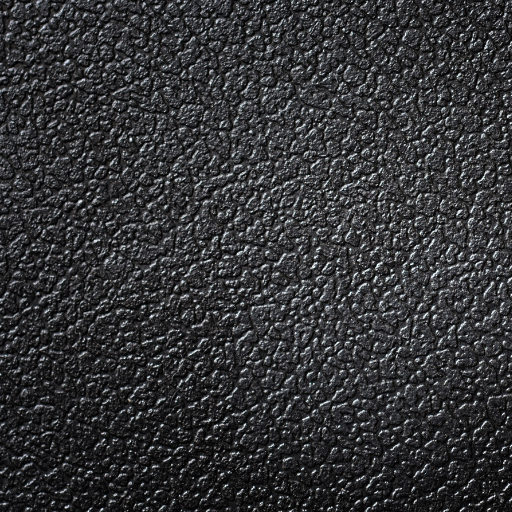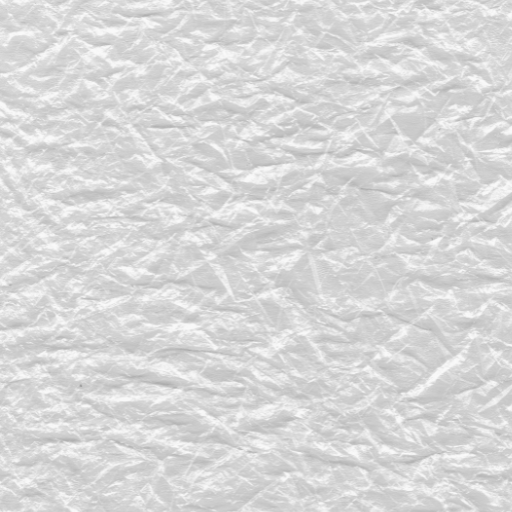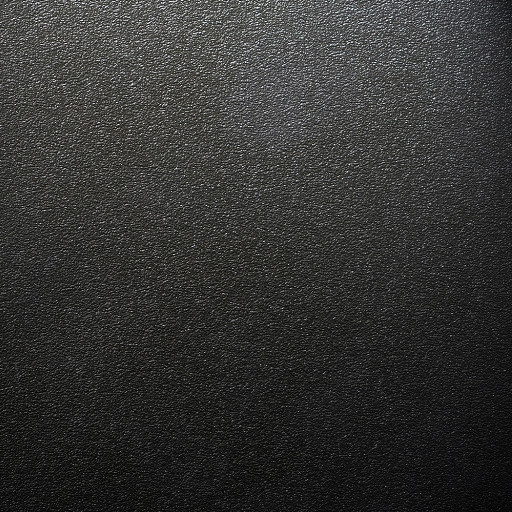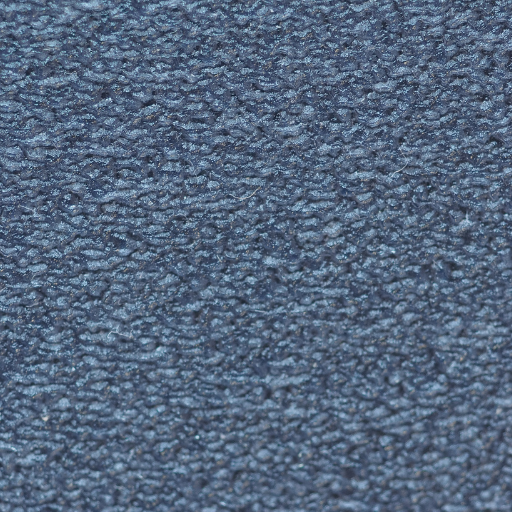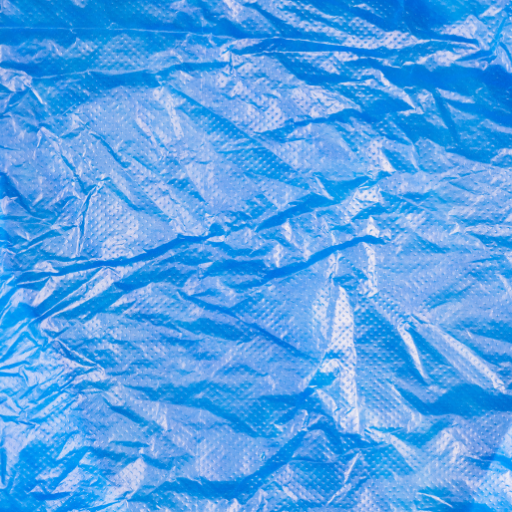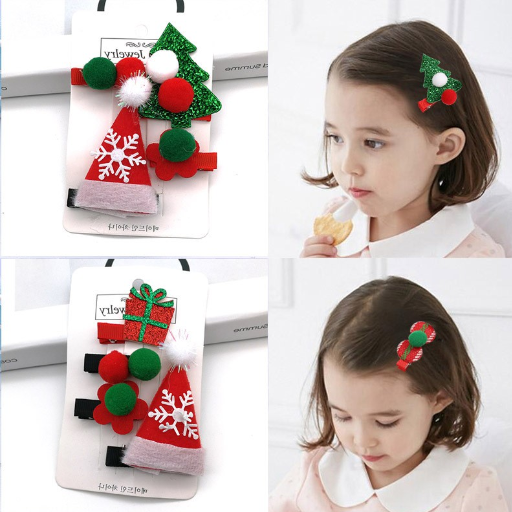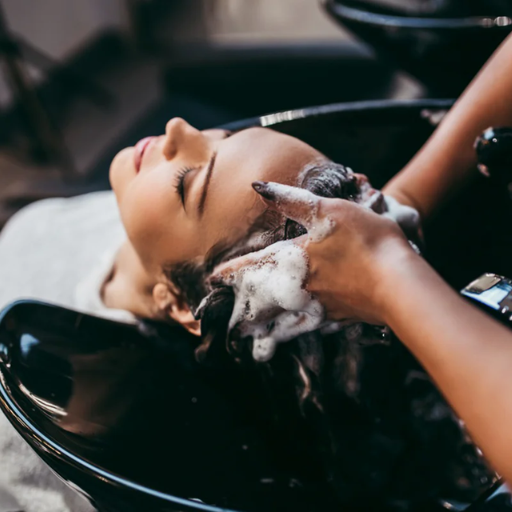A mixture of careful attention to small details and modern techniques is needed to obtain the best results in plastic injection molding. Applying textures to mold tools is one major aspect that involves this process. Texturing, on one hand, adds beauty to the final product but also determines its usability by giving it grip as well as ensuring its high standard. This blog will discuss several ways of texturing plastic injection mold tools that are effective and explain the advantages behind each technique. This guide is meant for everyone involved in any capacity related to making plastics, from veterans to amateurs. By doing so, this study material aims at offering some valuable inputs and actionable information which can aid you in realizing outstanding outcomes from your plastic injection molding undertakings.
Why is texture important in plastic injection molding?
Texturing in plastic injection molding is very essential for a number of reasons. This improves the look and feel of the product, which is achieved by providing different surface finishes such as flat or glossy surface or even complex patterns. Texturing can also offer other functional benefits like better grip and reduced slip which are necessary for consumer goods intended to be handled manually. Moreover, textures can mask molding defects and faults such as flow lines or sink marks leading to a more consistent and attractive product. Also, the mechanical properties of textured surfaces such as rigidity and strength directly affect their performance in various applications. As a result, this process is important in ensuring that the finished product meets its visual appeal and functional requirement during its use in plastic injection molding.
The role of texture in product aesthetics and functionality
The texture of plastic objects is crucial both in their aesthetic appearance and functionality. In terms of aesthetics, the look of a product can be completely transformed by texture from having a premium high gloss finish to getting a sophisticated matte look or complicated patterns that can make a brand standout. On the other hand, different textures contribute to better ergonomics for instance; improved grip and slip resistance which is critical for items such as hand tools and consumer electronics. For example, common technical parameters such as Ra (Roughness Average) values range from 3 to 25 µin for a smooth finish and 80 to 320 µin for a textured finish, impacting both visual and tactile qualities.
Technically speaking, selecting an appropriate texture involves understanding how it affects material flow during molding, which can help mitigate common defects such as weld lines, sink marks, and warpage. This implies that laser texturing can produce microtextures with Ra-values down to 0.3 µm whereas chemicals etching typically yield textures with Ra-values in the range of 1.6 – 8.3 µm thus improving mechanical performance through increased bonding strength between layers/coating adherence/ improved thermal properties.
Ultimately inclusion of texture in injection molded plastics should not only focus on aesthetics but also improve function and life span of the product. Thus striking this balance necessitates comprehensive consideration of design objectives intertwined with material properties aimed at achieving enhanced user experience, reliability with respect to its intended use.
Texture and its effect on product durability
The effect of texture on product durability is multifolded. Textured surfaces are able to enhance wear resistance by spreading stress more evenly thereby reducing likelihood of surface damage over time. Well-engineered textures may also lead to improved chemical resistance since their modified surface structures are better positioned to resist corrosive substances.Streamlined texture also improves bonding of coatings/adhesives acting as another line against environmental factors.In cases where there is enhanced grip, consumer products can prevent accidents and increase the lifespan of a product. Ultimately, proper utilization of texture in plastic injection molding results in products that are not only attractive but also highly durable and performing.
How to choose the right texture for your plastic mold?
There are many factors to consider when selecting the right texture for your plastic mould. First, you need to review what is required of the final product with respect to functionality such as whether it needs to have more grip, less friction or good look. The material properties vary and therefore different plastics will respond differently when subjected to texturing processes. It is also important that you comply with industry standards and guidelines that would make it workable for your specific application. Moreover, the manufacturing process should be taken into account since the level of precision and surface finish varies depending on techniques such as EDM (Electric Discharge Machining), laser engraving and chemical etching used. In addition, look at real world testing results and customer feedbacks which are meant to show how well these textures perform under different conditions when using them. Also, working alongside experienced mold designers can help in choosing an appropriate texture due to their vast knowledge on molds as well as making use of simulation software which is pasted well-situated could also provide some insights on this matter. Further still, the chosen texture must support a design theme while also proving durable.
SPI (Society of Plastics Industry) finish standards
The Society of Plastics Industry sets SPI finish standards in order to ensure consistent high quality surface finishes on molded plastic products. These standards classify finishes into four main grades; diamond grade, paper grade, stone grade and blast grade. The smoothest among these grades is diamond where a mirror finish is achieved by a fine grit made from diamonds which are excellent for highly cosmetic parts.The paper grade provides a semi-gloss look by way of using fine abrasive papers that give off moderate shine levels. Stone grade is much duller than this because it uses grit stones resulting in non-reflective matte surfaces.The last class is called blast; this one has been created through media blasting including lead bead or aluminum oxide hence leaving behind textured appearances suitable for reducing glare or hiding flaws. By knowing the SPI finish standards it is possible to select a finish that is suitable for both functional and aesthetic requirements.
Matte, gloss and textured finishes contrast: what type suits your product?
Matte finishes don’t reflect light; this characteristic helps in concealing finger prints, smudges or minor scratches thus making them appropriate for those products that aim at a more polished look but do not want to maintain glossy surfaces. On the other hand, gloss finishes have highly reflective shiny surfaces which enhance color intensity such that they are mostly used in products that require premium look which attract attention even though they can also show blemishes easily. Textured ones fall within these two extremes by having a surface that can be touched as well as less glare hence enhancing long term use by increasing grip and toughness thereby making them ideal for handheld devices and high traffic areas. These three types of finishes are selected based on their functionality or visual aspects, so the decision depends on factors like where it will be kept, how often it should be cleaned and what kind of experiences would you like users to have with it.
Exploring methods for applying textures to plastic molded parts
Various techniques are used in applying textures on molded plastics that have become popular, each of which has its own peculiarities and advantages. Chemical etching is one of the ways extensively used for creating intricate patterns on a mold surface using acids or other chemicals. This method allows great control over the deepness and pattern of texture. Laser engraving is another widely applied means that implies marking with lasers having high energies that can reproduce designs on a form with an utmost accuracy and stability. It works best when there are many complex fine details to be engraved on a mold. Sandblasting is also done where abrasive materials are forcefully sprayed onto the mold surface to produce uniform texture as well as fine scratches for decorative purposes; it is applicable where rougher textures are required. Besides, EDM (Electrical Discharge Machining) enables us to achieve complex and varying surface finishes by cutting out textures through electrical discharges on molds offering opportunities for more sophisticated texturing methods.
Every technique described here provides different benefits in terms of texture depth, consistency, and pattern complexity thereby enabling manufacturers to select the most suitable approach according to their individual demands and desired results.
Chemical etching vs. laser etching: Pros and cons
Chemical Etching:
Pros:
- Control Accuracy: Chemical etching gives much better precision control over depths and patterns resulting in more precise complicated designs.
- Consistency: The process helps produce identical outcomes across large-scale production volumes hence ensuring high quality maintenance.
- Versatility: An option open for use with almost any kind of material or application making it highly adaptable solution.
- High Volumes Cost Effective: This way is perfect for mass production where setup costs are justified by quantities manufactured.
Cons:
- Chemical Handling: Acidic substances handling involves strict operation rules which make it complicated.
- Environmental Impact: The problem arises while chemical waste disposal causes negative ecological influence as well as additional expenses connected with compliance issues;
- Material Restrictions: Some types of substrates cannot be chemically etched, thus narrowing down the range of its application.
Data:
- Precision Tolerance: ± 0.01 mm suitable for fine detail work.
- Production Speed: Approximately 60-120 minutes per mold based on complexity.
Laser Etching: Pros and Cons
Pros:
- High Accuracy: Laser engraving ensures superior precision thus being able to repeatedly create miniature patterns.
- Speed: This is useful when quick turnarounds are needed because laser techniques require less time to set up and process than chemical alternatives do.
- Clean Process: It does not produce any hazardous waste and is environmentally friendly because no toxic chemicals are used in it;
- Flexibility: Changing software settings can provide different textures and patterns without creating new forms.
Cons:
- Initial Investment: The cost of laser equipment is initially higher than that for a chemical etching setup.
- Material Limitations: However, there may be some materials that cannot be cut with lasers making them unsuitable to this technique which can be applied only to certain substances.
- Surface Finish Limitations: Sometimes, more than one pass would be required in order to achieve a similar depth or roughness as that obtained by some chemical etching processes;
Data:
- Precision Tolerance: ± 0.005 mm ideal for high-detail applications.
- Production Speed: Approximately 10-30 minutes per mold depending upon design intricacy and material type used for production of the molds
When comparing these methods, manufacturers must consider the importance of accuracy, speed, environmental impacts, or material compatibility in order to select the best texture application technique.
EDM (Electrical Discharge Machining): Achieving intricate textures
EDM is the process of producing intricate and detailed textures by removing material from a workpiece using electric discharges/sparks. This accurate method is particularly effective for hard materials which are difficult to machine using traditional methods. The EDM system involves a tool that is usually made of graphite or copper and shaped into the desired texture before being brought near the work-piece. The electrical pulses cause extreme heat, which erodes material at a microscopic scale mirroring the features on the mould with amazing precision. It can be used to make complicated geometries and fine finishes that would not otherwise be possible with other processes such as machining. Furthermore, this technology works well with different types of materials including metals and alloys meaning it is suitable for aerospace, automotive and tooling companies.
CNC machining for precise texture control
CNC machining uses computer-controlled tools to create accurate textures on diverse surfaces. CNC machines have been designed to reproduce complex patterns that are capable of being replicated with minimum human intervention through advanced programming software. Secondly, this technology has many merits like; high accuracy, consistency plus ability to produce complex geometries among others. CNC machining can be applied to numerous materials in most industries since it cuts across metal, plastics and composites amongst others. Furthermore, CNC systems are programmable allowing quick adjustment or refinement of texture patterns thus increasing overall production productivity while enabling rapid adoption of design changes.
Applying texture through mold surface modifications
Applying Texture Through Mold Surface Modifications involves altering the mould surface so that specific textures are imparted into the finished product itself. One common method is chemical etching where acid or other chemicals eat away at parts of the mold creating patterns on it’s surface.Laser texturing is also an option whereby high powered lasers remove some amount of mold surface material in order to generate certain kinds of textures.These techniques enable accuracy as well as repeatability thus making them good for complex designs.
For effective mold surface modifications, it’s crucial to consider technical parameters such as surface roughness (Ra value), depth of texture, and the type of material used for both the mold and the product. For example, Ra values may range between 0.8-1.6 micrometers for consumer goods but 1.6-6.3 micrometers might be necessary for more intricate textures on automotive components. Similarly, depending on the desired finish and application, the depth of a texture can either vary from few micrometers to several millimeters.
Chemical etching typically involves selecting the right etchant for the mold material—commonly using ferric chloride for steel molds. Consequently, in laser texturing one must carefully control laser wavelength, power and speed which typically would have; a power rating ranging from 20 to 200 watts or scanning speeds that fall within 100-1000 mm/s based on desired depths and details of texture.In certain industries such as automotive, medical devices and consumer electronics where function and beauty are inseparable from specific surface properties?
Mastering mold texture: Tools and techniques for best results
Choosing the right tools and techniques is essential in mastering mold texture. Begin by selecting a suitable texturing tool such as chemicals or high powered lasers, depending on how complex and accurate it needs to be. The key thing is to make sure that the texture of the mold surface remains uniform all through the application process. Cleaning and maintaining the texturing tools regularly helps prevent contamination and lengthens their lifespan. Calibrating the machinery to maintain standard values like laser power, scanning speed and etchant concentration ensures that there is reproductivity during each production run. In addition, routine inspections using microscope analysis can help identify any discrepancies early enough.
Sanding, polishing, bead blasting for mold surface preparation
Mold sanding, polishing and blasting are among the significant steps used when preparing mold surfaces towards achieving desired finishes and making them last longer. Sanding uses abrasive materials such as sandpaper to remove imperfections that create smooth foundation for further development. This leads us into polishing where finer abrasives or polishing compounds smoothen out roughness on different surfaces giving them attractive shines when viewed directly from above. It helps produce molds with fewer defects that are of high quality such as sink marks on parts where inserts have been used after molding processes.Blasting methods such as sandblasting or bead blasting employ high-speed streams of abrasive particles to clean or texture the surface removing residues effectively while at same time preparing it for further treatment operations. Each technique must be meticulously applied so that final mould texture will have consistency.
How to effectively apply grain and detailed textures
When applying grain and detail textures effectively on molded surfaces begin by choosing an appropriate texturing method based on material type and finishing desired. Techniques like chemical etching, laser texturing or EDM (Electrical Discharge Machining) could be applicable due to their complexity levels required in terms of texture types.
- Chemical Etching: It involves corroding fine grain patterns into the mold surface using acid or other chemicals. It is capable of intricate textures and can be controlled for precision. Always ensure that etchant concentration and exposure time are adjusted to achieve uniformity.
- Laser Texturing: Eroding the surface with laser beams is highly precise. Crucial parameters to consider include laser power (usually between 10-500 W), scanning speed (typically 100-500 mm/s) and spot size (20-200 µm). The right choice of these parameters based on material characteristics guarantees the correct texture in each instance.
- EDM Texturing: Electrical Discharge Machining shapes the mold surface through electrical discharges. It is particularly useful when creating deep, intricate patterns. The important variables are current intensity (0.5-10 A), pulse duration (µs-ms range), and electrode gap (10-50 µm). These settings require careful fine tuning for proper control during the texturing process.
- Surface Preparation: Before being textured, a mold’s surface should be thoroughly cleaned and polished. This involves several stages such as using abrasion processes at different levels of roughness i.e., coarse grit sizes for removing imperfections followed by polishing compounds for adding shine to it while reducing its roughness level respectively; microscope observations may help ensure no defects exist prior to applying texture.
- Routine Inspection: Regular checks made using high magnification equipment such as SEM or optical microscope aids early detection of inconsistencies which is crucially important in maintaining a consistent quality across production batches.
Following these practices and correctly tuning the technical parameters would enable manufacturers produce high quality and detailed textures that improve functionality as well as aesthetics of mold surfaces.
Overcoming common challenges in the plastic texturing process
The plastic texturing process faces a common challenge of making an even texture on any kind of intricate geometry. This can result in irregularities because the surfaces are not consistent, which calls for precise control of texturing parameters and employment of advanced simulation software. Another concern is how to handle the wear and tear on texturing tools, which necessitates regular maintenance and use of good quality materials for tooling. Moreover, choosing the right method of texturing for different materials is important since some techniques may deliver suboptimal results when used on particular polymers. It is also crucial to address environmental issues such as disposal of chemical by-products. To lessen its environmental impact therefore, eco-friendly practices and materials should be adopted. Lastly, enforcing substantial quality assurance measures including periodic checks and tests ensures that the textured surface matches the desired standards as well as performance requirements.
Avoid texture distortion during injection molding process
To avoid texture distortion during injection molding process, I focus on several key factors. First and foremost, I ensure that mold temperature as well as injection speed are controlled accurately so that warping is prevented and uniform material flow ensured. Secondly, I have high quality molds inspected frequently so that imperfections do not lead to any inconsistencies in terms of textured surfaces. Proper selection of materials also matters because similar polymer may respond differently under similar conditions Further still; I can employ advanced simulation software so that potential hitches can be foreseen before commencing with actual production while adjusting parameters accordingly.Regular maintenance of these molding equipments coupled with strict adherence to quality protocols help in achieving consistent texture without distortion.
Ensuring uniform texture depth across complex geometries
In order to achieve uniformity in texture depth across complicated geometries my approach is multifaceted If given a chance, firstly I will use premium molds alongside precision machining techniques whereby detailed surface textures are obtained. In this case it becomes possible through advance simulation software to predict how material will flow inside the mold thus enabling me to adjust parameters so that the texture can be made uniform. Texture depth is affected by unequal heating and cooling procedures as it causes differential shrinkage. I also employ great process control and frequently examine molds for any kind of wear on them. This way, regardless of complexity of the part being produced, one can preserve the integrity of the texture.
Tips for Maintaining Quality in Plastic Texturing Processes
Equipment regular maintenance and calibration are key to ensuring quality in plastic texturing. Begin by performing your routine inspection and cleaning of molds to prevent texture altering residues from building up. Calibration of all equipment must be done meticulously so as to achieve uniformity in texture application. To avoid irregularities, use best-in-class materials specifically created for texturing. These conditions include temperature and humidity that may also have an effect on the outcome of the texture produced. Quality control can be improved by training employees on better ways to do things or what is going on with technological advancements in texturing. Lastly, having a strong quality assurance system which involves frequent tests and readjustments provides early detection and correction of possible problems otherwise would have been missed before they become a problem.
Best practices in maintaining mold texture during the injection molding process
The first thing I do in order to maintain mold texture during the injection molding process is starting with making sure that molds are designed using durable materials that can be cycled repetitively. I do this by cleaning and inspecting these molds regularly so as to prevent any deposits from building up which might otherwise compromise the quality of texture. In addition, constant process parameters like temperature and pressure control play a key role in achieving even textures. Damage causing agents should not be allowed in a storage area for molds, besides, controlled environment may as well prevent wear and tear. Besides, I also carry out continuous monitoring and equipment calibration to keep them working at their best. Through training my team on these aspects, they will all understand why it is important to maintain the same level of mold texture throughout production operations.
How to ensure consistent texture quality in molded parts
I begin by designing a mold that can handle detailed textures. Each project has its own specifications, so I have to take this into account when molding the texture on the part. To achieve such features, it is important for me to consider each process in detail at this point. Using materials like hardened steel or aluminum as molds enables them to withstand frequent use.
The most essential Thing is the control of parameters involved in the process. To fill up the mould with plastic uniformly, I set and check temperatures and pressures correctly. For example, maintaining a mold temperature within 70°F (21°C) and 180°F (82°C), while injection pressure varies around 12,000 – 22,000 psi depending on material can lead to best outcomes. Similarly, monitoring closely plastic melt temperature will help because it usually ranges from approximately 350°F (177°C) to about 550°F (288°C).
My aim is precision in mould production using advanced technologies such as CAM. Consistency in machine settings and regular calibration of injection molding equipment facilitate uniform texture application. Moreover, simulation software allows prediction and solving of prospective problems prior to manufacturing.
Also considered are environmental factors like humidity and surrounding temperature within the production area. As per recommendations I maintain these conditions at all times so that they do not affect our molding operations adversely even for once.. Finally, a strong quality control plan includes routine tests performed throughout manufacturing processes cycle to identify inconsistencies that will be addressed immediately upon their discovery My team is trained continuously on new technologies and best practices in order to maintain high standard levels of consistent surface finish techniques
Troubleshooting common issues in plastic texturing
When troubleshooting plastic texturizing problems, one must first identify the root cause and then implement practical solutions. An example of this is when there are surface imperfections like flow marks which happen due to uneven mold filling. I have to make sure that there’s even temperature in the mould and optimize injection velocity to solve this problem. Another issue is warping, usually as a result of non-uniform cooling. Therefore, what I do to prevent warping is to control the cooling process uniformly throughout the whole part. The texture may not stick well on its mould surface if it has not been properly cleaned and primed. Finally, colour inconsistencies can occur but they can be controlled by using same material batches and proper mixing techniques. By following these steps of correction high-quality end products in plastic texturing are achievable.
Trends and future directions in plastic texturing for injection molded parts
Progress in plastic texturing for injected molded parts is heavily influenced by technological changes and environmental considerations. One emerging trend is the use of laser engraving and digital texturing techniques as opposed to traditional ones which offer more accuracy and customization options. These methods make it possible for creation of complex designs and delicate features, thus improving the attractiveness and performance of plastics. Moreover, current focus on sustainability encourages employment of eco-compatible texturing processes that utilize biodegradable materials. Integration of automation with AI systems into manufacturing process is becoming a norm such that there can be continuous monitoring and adjustments resulting in better efficiency and uniformity among others. The future of plastic texturing in injection molding will involve constant innovation aimed at improving quality while keeping up with the growing demand for more intricate patterns.
Innovations in texturing methods: From spray patterns to nano-textures
Once upon a time, traditional spray patterns were the foundation of surface finishes with different types of injection molded parts. A laser texturing technique complements previous spray patterns which have been used for its efficiency in delivering various surfaces. The reason behind increasing demand for these complex patterns is that they have finer details with more accuracy as compared to the others across industries. In addition, nano-texturing allows modification of materials at molecular level hence developing unique properties like antimicrobial or increased wear resistance among others. These nano-scale textures could alter significantly how plastic parts interact with surfaces, thus rendering them as something more than just being aesthetically appealing. As a result, not only does it improve overall quality and performance but also makes available options for innovative products through differentiation within the injection molding market.
The evolving role of texture in sustainable and biocompatible plastics
The role of texture is increasingly crucial in sustainable and bio-compatible plastics. Growing demand for eco-friendly materials has led to the design of textures that facilitate biodegradability and accommodate bio-compatible elements. Advanced texturing methods can enhance performance of plastics from renewable sources such that they meet strict requirements for medical and environmental applications. For instance, textured surfaces may be designed to enhance mechanical properties and longevity of bioplastics giving them an edge over traditional plastics. Furthermore, textured surfaces can contribute significantly towards reduction in use of chemical additives through minimizing migration of undesirable substances. Moving forward, interplay between material composition and textural features is expected to result in inventive solutions capable of meeting sustainability objectives as well as expanding possibilities in terms of plastic use in various sectors.
How digital modeling is transforming texture design and application
There are plenty of ways in which digital modelling is upsetting the apple cart as well as revolutionising texture design and application through sophisticated simulation techniques and precision engineering. With software tools, manufacturers can create very detailed and accurate texture patterns which are customised to meet specific functional and aesthetic needs. Through computer-aided design (CAD) and computer-aided engineering (CAE), for example, one can visualise textures before physical production hence minimizing the requirement for expensive prototypes or iterations. Digital modeling also allows changing parameters like depth, roughness, and spatial frequency that impact the surface properties of a final product with unmatched ease. For example, Ra (average roughness) or Rz (average maximum height) could be used to quantify surface roughness. Precise replication of even the most intricate textures is made possible by using high resolution scanning and imaging technologies that improve on the performance of final products. Therefore, combining digital modeling with Additive Manufacturing/3D printing techniques facilitates seamless direct application of complex textures onto plastic parts enabling customization and innovation together with maintenance of sustainability objectives.
Reference sources
- Xometry
- Source Link: 4 Ways on How To Achieve Texture in Plastic
- Summary: Xometry provides a detailed guide on achieving texture in plastic materials. The article discusses the efficiency of mold texturing, where the desired texture is incorporated into the mold itself and subsequently imparted to the molded plastic parts. This method ensures consistency and high-quality finishes, making it a reliable resource for understanding plastic texturing techniques.
- MoldMaking Technology
- Source Link: Texturing Molds for Thermoplastics: Factors for Success
- Summary: MoldMaking Technology offers an authoritative article on the process of texturing molds for thermoplastics. The piece covers essential considerations for successful texturing, such as pattern selection, material compatibility, and the impact of texture on part aesthetics and functionality. This comprehensive guide is valuable for professionals seeking to enhance their knowledge of mold texturing techniques.
- Protolabs
- Source Link: Mold-Tech Textures and Other Finishes for Plastic Parts
- Summary: Protolabs provides an extensive overview of various texturing options for plastic molded parts, including standard textures and Mold-Tech finishes. The article explains how different textures can enhance the visual and tactile properties of plastic products, offering insights into the selection process and benefits of each texture type. This resource serves as a credible reference for understanding the diverse finishes available in plastic molding.
Frequently Asked Questions (FAQs)
Q: What are the primary methods for adding texture to plastic injection mold tools?
A: The primary methods for adding texture to plastic injection mold tools include spark erosion, sanding and polishing, etching the mold, and chemical etching. Each technique can create a distinct surface texture on molded plastic parts, ranging from wood grains to geometric patterns. The choice of method usually depends on the desired surface finish and texture, complexity of the design, and the material of both the mold and the parts being produced.
Q: How does the draft angle impact the application of textures in injection-molded parts?
A: The draft angle is crucial in the design and manufacturing of textured plastic injection-molded parts. It affects how easily the part can be ejected from the mold without damaging the surface finish. A proper draft angle ensures that the textured molds can release the part efficiently. Insufficient draft may result in tool marks on the part or damage to the texture, especially for textures with significant surface depth. Generally, deeper textures require larger draft angles.
Q: Can any texture be applied to a mold cavity, or are there limitations?
A: While many textures can be applied to a mold cavity, there are limitations based on the mold material, surface depth of the texture, and the molding process itself. High-precision techniques such as etching the mold cavity allow for complex textures, but the tooling must be able to sustain these details. Textures also need to be compatible with mold release, so very intricate textures may require adjustments to the mold design or process parameters. Additionally, industry texture standards, like mold tech and yick sang, provide guidelines on the types of textures that can be effectively applied and reproduced.
Q: How are texture standards used in injection-molded part design?
A: Texture standards, such as those from Mold Tech and Yick Sang, offer a catalog of predefined textures that mold makers and designers can apply to a mold. These standards help in achieving consistent surface finishes and textures across different parts and mold cavities. By selecting a standard texture from a catalog, designers can ensure that the textured molds meet specific aesthetic and functional requirements. These standards also simplify communication between designers, mold makers, and clients by providing a clear reference for the desired outcome.
Q: What role does mold material play in determining the final surface texture of plastic injection-molded parts?
A: Mold material significantly impacts the final surface texture of plastic injection-molded parts. Harder mold materials can achieve finer details and a higher polish, leading to more precise and intricate textures. Conversely, softer materials may not support highly detailed textures or may degrade faster, affecting the quality of the surface finish over time. The material choice also influences the method of texturing; for example, etching the mold cavity may be more suitable for certain materials to achieve the desired texture applied.
Q: How does spark erosion work in creating textured molds?
A: Spark erosion, also known as electrical discharge machining (EDM), is a process used to create textured molds by removing material from the mold cavity using electrical discharges. The entire mold or specific areas can be treated to achieve the desired texture. This method is particularly effective for creating intricate patterns and details that would be difficult or impossible to achieve through mechanical means. The texture depth and pattern can be precisely controlled, allowing for the replication of complex textures like wood grain or detailed geometric patterns on the molded plastic parts.
Q: Can texture be applied by hand to a mold surface, and what are its limitations?
A: Yes, texture can be applied by hand to a mold surface through methods like manual sanding and polishing or by applying coatings that create a texture. However, this approach has limitations in terms of the consistency and repeatability of the texture across the entire mold or multiple molds. Hand-applied textures may also be less detailed compared to those achieved through techniques like etching the mold cavity. This method is often used for prototypes or unique art pieces where individuality is more desired than uniformity.
Q: What is the importance of selecting the right texture for the function of the plastic injection-molded part?
A: Selecting the right texture for the function of the plastic injection-molded part is crucial for several reasons. Texture can influence the part’s aesthetics, enhancing its appearance with finishes that mimic materials like leather or wood grain. Functionally, the texture can impact the part’s grip, tactile feel, and ability to hide scratches or blemishes. Textures also affect the part’s manufacturability, including mold release and the ability to fill the mold cavity properly during injection. Choosing an appropriate texture ensures the part meets both its aesthetic and functional requirements.



